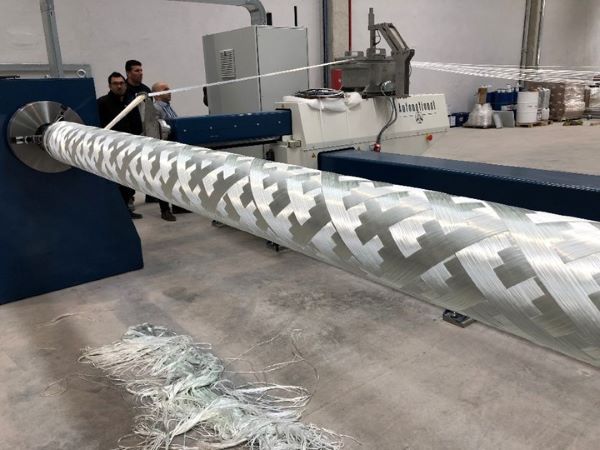Email: info@hdfiberglass.com Whatsapp: +86 15200033566
Views: 0 Author: Site Editor Publish Time: 2023-10-30 Origin: Site








Are you embarking on a project that requires the use of fiberglass materials? Whether you're a seasoned manufacturer like Glenn Campos from Costa Rica or a reseller looking to serve your local customers, selecting the right fiberglass roving is crucial to the success of your project. With the wide array of options available in the market, it's essential to make an informed choice. In this guide, we'll walk you through the process of choosing the perfect fiberglass roving for your specific needs, ensuring that your project is a resounding success.
Understanding Your Project Requirements
Before delving into the specifics of fiberglass roving, you need to have a crystal-clear understanding of your project requirements. Start by asking yourself a few vital questions:
What is the purpose of your project?
What are the environmental conditions the materials will be exposed to?
What are the desired physical properties, such as strength, weight, and durability?
What are the dimensional specifications that you require for your roving?
Understanding the unique aspects of your project will guide you in choosing the right fiberglass roving that will meet your specific needs.

Types of Fiberglass Roving
Fiberglass roving comes in various types, each suited to different applications. Let's explore some of the most common types and their ideal uses:
Direct Roving: This type is designed for use in applications where high tensile strength and minimal fuzz are essential. It's perfect for reinforcing composites and providing excellent mechanical properties.
Assembled Roving: Assembled roving is known for its exceptional wet-out properties and is often used in the production of pultruded products, filament winding, and other specialized applications.
Chopped Strand Roving: If your project involves the manufacture of chopped strand mats or spray-up applications, this type of roving is the right choice. It offers excellent dispersion in resins and is known for its consistency in strand length.
Texturized Roving: Texturized roving is ideal for applications where bulk and flexibility are key, such as insulation materials. It provides excellent coverage and thermal insulation properties.
Gathering Data and Making Informed Decisions
Selecting the right fiberglass roving involves considering key factors that directly impact your project's success. Here's a list of essential elements to keep in mind when making your decision:
Tensile Strength: Evaluate the tensile strength of the roving. Different projects require varying levels of strength, so ensure your choice aligns with your project's demands.
Environmental Factors: Consider the environmental conditions the materials will face. Will they be exposed to moisture, chemicals, or extreme temperatures? Your choice should be resistant to these factors.
Weight and Density: Depending on the weight and density requirements of your project, you'll need to select roving that offers the desired characteristics.
Sizing Compatibility: Ensure that the roving is compatible with the resin system you plan to use. A proper bond between the roving and resin is essential for the integrity of your final product.
Dimensional Stability: Some projects demand high dimensional stability. Make sure the roving you choose can maintain the required dimensions throughout the manufacturing process.

More Related Questions
What Is the Impact of Roving Tex and Yield? - The tex value of roving determines the linear density, which in turn affects the strength of the final product.
How Do Roving Twists Affect Performance? - The number of twists in roving strands can impact the wet-out properties and overall strength.
What Role Does Sizing Play in Roving Performance? - The sizing applied to roving strands helps protect them during processing and impacts their compatibility with resins.
By addressing these questions and considering the factors mentioned, you'll be well-equipped to make an informed decision when choosing the right fiberglass roving for your project.
Conclusion
In conclusion, selecting the right fiberglass roving for your project is a critical decision that can significantly impact the outcome. By thoroughly understanding your project requirements, the types of roving available, and the key factors that influence your choice, you can make an informed decision that ensures the success of your endeavor. Whether you're a manufacturer like Glenn Campos or a reseller, Hebei HaiDing Fiberglass Manufacturing Co., Ltd. stands ready to provide you with top-quality fiberglass materials customized to your specific needs. Visit our website or contact us through various platforms to explore the possibilities of partnering with us. Your success is our priority.
Is it better to choose emulsion or powder for glass fiber chopped strand mat?
Building Stronger Ships: Application Cases And Technical Advantages of Yuniu Chopped Glass Fiber Mat
Yuniu Fiberglass Chopped Strand Mat - Helping Your Project To Success
Corporate Visual Identity of Hebei HaiDing Fiberglass Manufacturing Co., Ltd.
What does the price increase of fiberglass products (chopped strand mat) mean?
Fiberglass Materials for Electrical Insulation and Electronics Applications